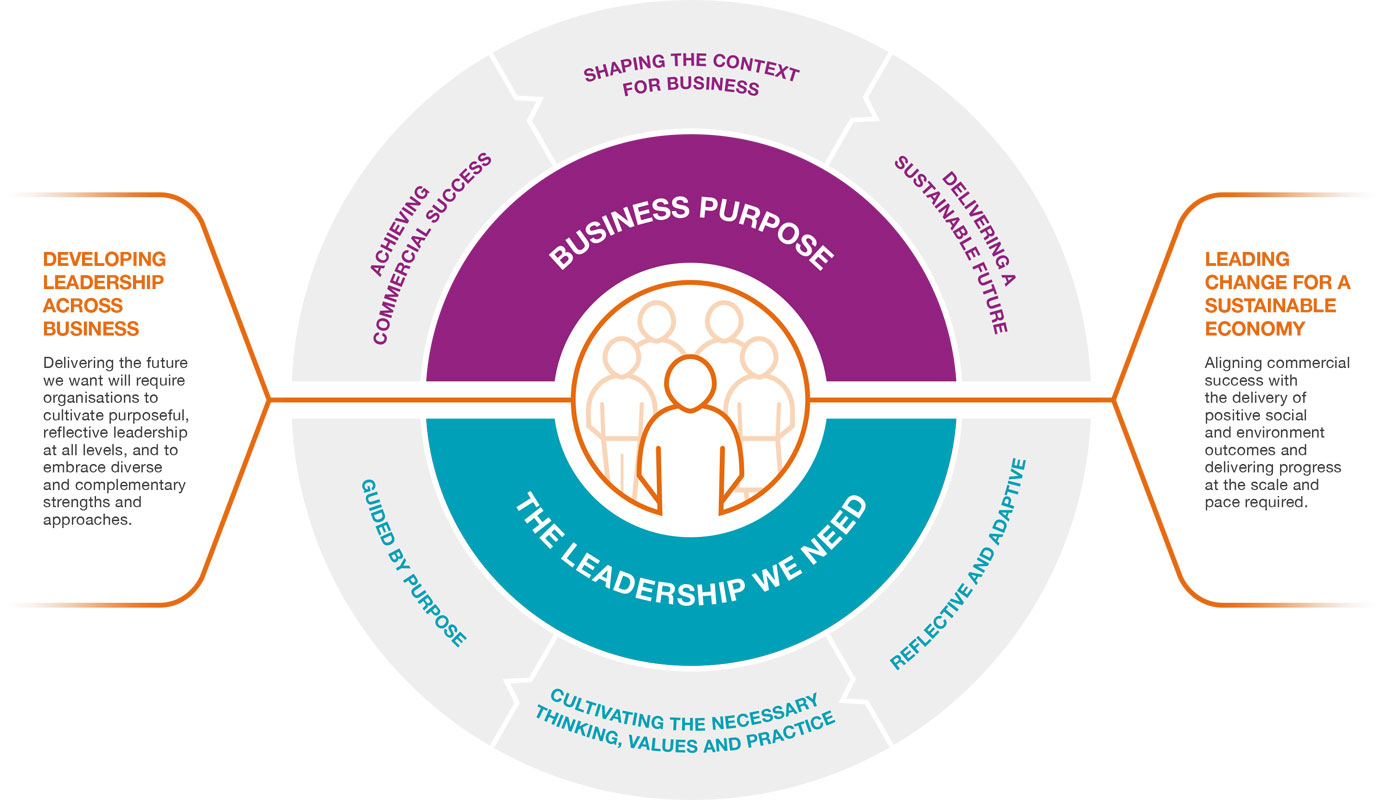The Cambridge Impact Leadership Model describes the leadership we need to deliver value for business, society and the environment.
Many traditional leadership frameworks focus on helping leaders succeed within current economic and social systems, rather than on transforming these systems. By not acknowledging challenges such as tackling short-termism, setting targets informed by science, and delivering against societal expectation, such frameworks do not equip leaders to tackle global issues and shape the future we want.Informed by our work with over 9,000 leaders internationally, the Cambridge Impact Leadership Model describes the leadership we need to deliver value for business, society and the environment.Visit our Leadership Hub and learn more about how we can help your company lead change towards a sustainable economy. |
What should leadership be?
Guided by a purpose to align business success with the delivery of positive social and environmental outcomesA purpose that:
|
Built on thinking, values and practice to deliver on this purpose
developing the contextual insight, mindset and knowledge base necessary for innovating new forms of commercial and societal value
developing the values, sense of agency and worldview consistent with achieving purposeful leadership
nurturing the leadership practices, specific skills, and the personal resilience to experiment and deliver results in line with purpose |
Continually reflecting and adapting, holding itself accountable to deliver results
|







